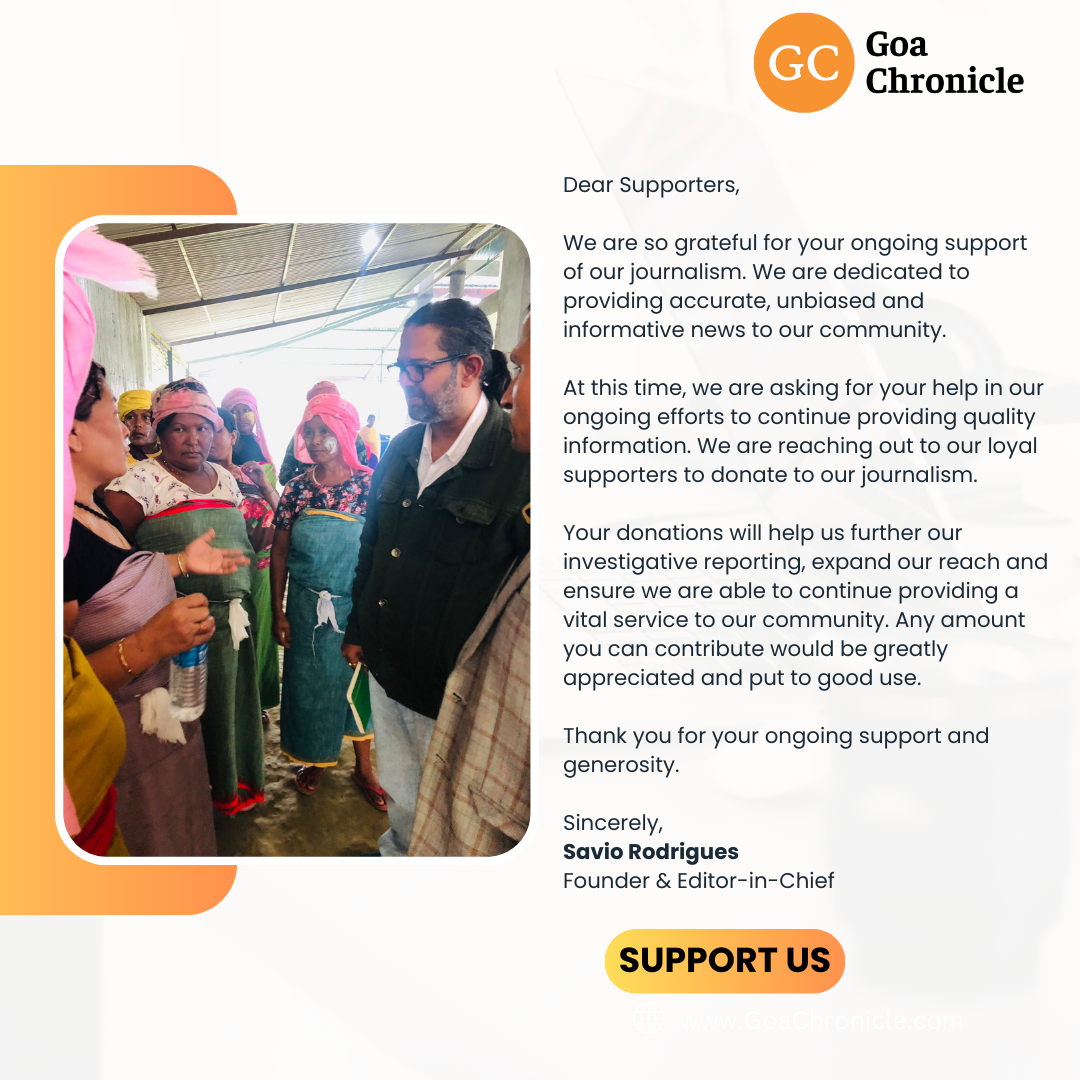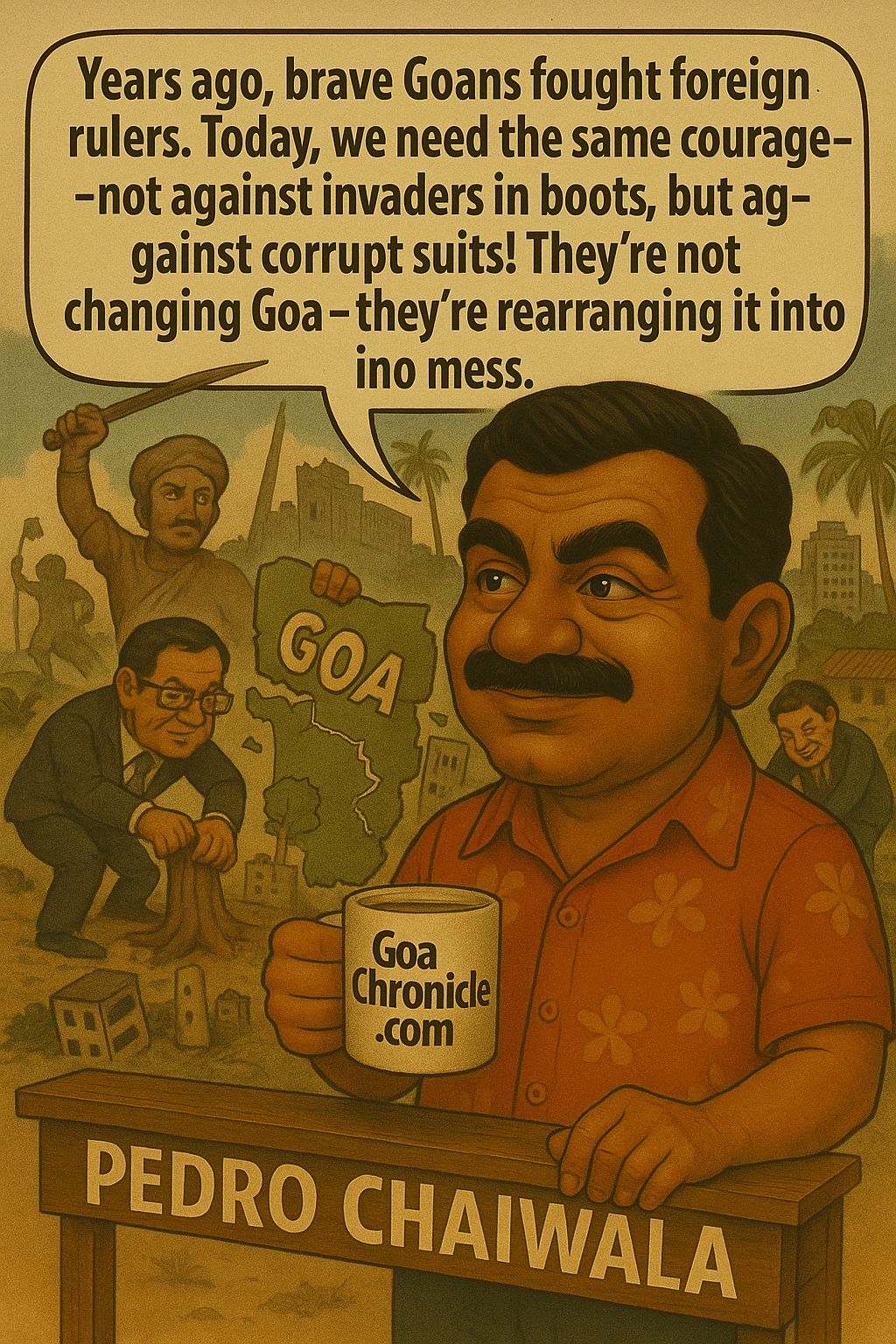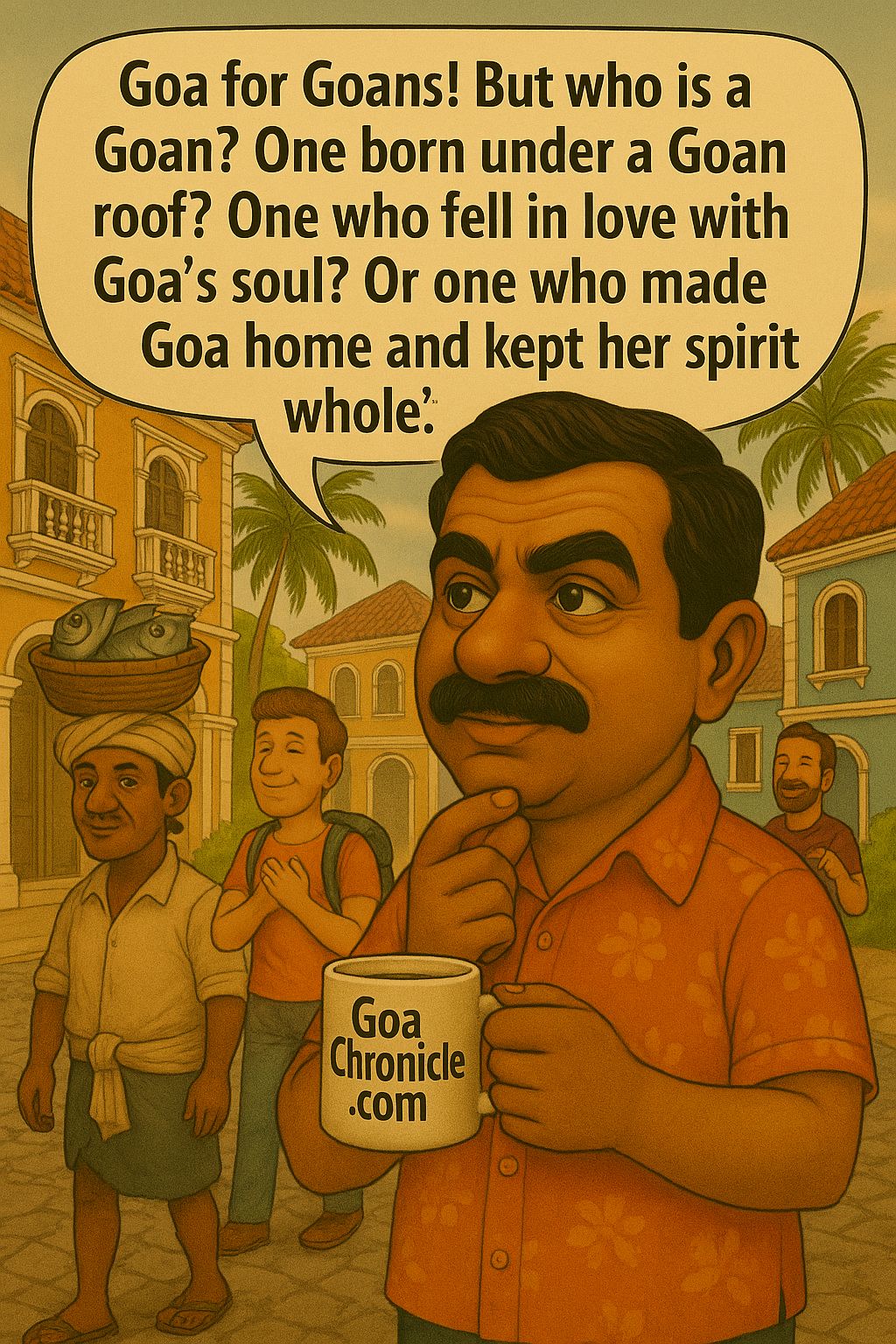Recently a social media influencer based in Germany made a YouTube video in which he criticized and labeled India’s Prime Minister Narendra Modi as a ‘Dictator’. His video got a lot of traction for those who are critical of the Modi governance in India.
As a believer in free speech and opinion, I would prefer not to voice my views on his assertions, which according to me were rather far-fetched and bordering on absurdities. I would like to focus on the moot point raised of ‘Modi being a dictator’. The social media influencer has without rationale or an analysis of the work done by Modi for the people of India over the last 10 years played to the gallery of Modi cynics. I doubt if and when questioned would debate with Amit Bagaria or myself on the facts around Modi’s performance as the Prime Minister of India.
To term someone a dictator, one needs to analyze the work done during their time in power. The work done by Modi leading the Indian government has been enormous. My admiration and appreciation for him as a leader of one of the largest democracies in the world has only increased. People can read all about his work when a book penned by Amit Bagaria and myself will be released soon. I wanted to share 18 reasons why Modi is not a dictator but a savior of India.
- On 31 January 2024, there were 51.66Cr Pradhan Mantri Jan Dhan Yojana accounts (55% women) with a balance of ₹2.1714LCr, at an average balance of ₹4203. More than 78% of these accounts and almost 77.78% of the balance is in PSBs. More than 68% of them had RuPay Debit Cards. The budget for women-specific schemes has gone up from ₹93,000Cr in FY18 to ₹3.1LCr in FY25, an annualized increase of 18.77%. More than ₹13.6LCr has been spent on women’s schemes in Modi’s 10 years. That equals an incredible ₹20,792 per woman per year.
- From inception on 4th June 2018 till 30th November 2023, over 47.87Cr Jan Aushadhi Suvidha Oxo-biodegradable Sanitary Pads have been sold at over 10,000 Janaushadhi Kendras nationwide. Initially launched at ₹2.50 per piece, prices were reduced to ₹1 per piece with effect from 27 August 2019. Market prices for similar (branded) pads range from ₹3.57 to ₹350 per piece.
An incredible sum of ₹16.93LCr has been invested in the power sector in 93⁄4 years and a further investment of ₹17.05LCr is in the pipeline. Around 2.86Cr homes in 18,374 villages had no electricity connections in April 2015. Within four years, this was reduced to zero by the Modi Govt under the SAUBHAGYA scheme, the largest and fastest expansion of access to electricity in the world. The power generation capacity of about 249GW as of March 2014 was enhanced to 429.96GW as of 31 January 2024, an increase of over 72.7% in 9 years and 10 months. Power generation has gone up 59.2%, from 1,020 BUs in 2014 to 1,624 BUs in 2023.
- Under the Pradhan Mantri Ujjwala Yojana 1.0 and 2.0 (the Ujjwala Scheme), 100% free LPG (gas cylinder) connections were provided to more than 12.54Cr rural households as of 31 January 2024. There is a rise in the female labor force participation rate from 23.3% in FY18 to 37% in FY23., an increase of 58.8% in five years.
As of November 2023, more than 6.78L-km of optical fibre cable (OFC) has been laid (compared with just 6577km at the end of FY14), over 2.1L Gram Panchayats (around 82.4% of all GPs in India) connected through BharatNet, over 8.47L Fibre-To-The- Home (FTTH) connections commissioned, and more than 1.05L Wi-Fi hotspots installed in the GPs. As of November 2023, 1.66L candidates registered for digital education, 8.4L patients registered for healthcare services, 2.1L cattle registered for veterinary services, and 5,600 solar streetlights were installed in 750+ digital villages.
Direct Benefit Tranfers-linked schemes were increased 11.21 times, from 28 in May 2014 to 314 in January 2024. Till January 2024 cumulative DBT is over ₹34.33LCr. The number of DBT beneficiaries went up 8.676 times from 10.8Cr in FY14 to 93.7Cr in FY23. India has saved an estimated ₹3.6LCr by March 2024 due to DBT.
- Over 32.14Cr PM Mudra Yojana loans have been disbursed to women entrepreneurs, which comprises over 68.6% of all Mudra loans disbursed in 9 years. The amount of ₹12.157LCr disbursed is over 46.6% of the total disbursed to all borrowers. Nearly 1Cr women have been assisted by 83L SHGs to become lakhpati didis. The initial target of 2Cr didis has been increased to 3Cr. Under PM JANMAN (Pradhan Mantri Janjati Adivasi Nyaya Maha Abhiyan), ₹24,000Cr has been allocated. 2,02,626 doctors/specialists have been onboarded, 14,819 Hubs established, and 1,15,177 Spokes operationalized.
As of 28 February 2024, over 21.3Cr consultations have been done and the scheme is getting more and more popular by the day.
Free eSanjeevani National Telemedicine Service launched in November 2019 facilitates quick and easy access to allopathic and Ayush doctors and specialists from smartphones, or by visiting an Ayushman Bharat Health and Wellness Centre (HWC).
As of 29 February 2024, Ayushman Cards have been created for 32.007Cr persons (58.3% of the total target) and eKYC has been done for almost 31.96Cr individuals. More than 6.27Cr authorized hospital admissions have been done and ₹78,767Cr has been spent (in other words, saved by citizens), at an average of ~₹12,600 per treatment.
- Up to 31 January 2024, more than 11.715Cr individual household latrines (IHHLs) were been built across the length and breadth of India at an average of 34,375 per day. Over 2.24L community sanitary complexes were been constructed. More than 5.11L villages (86% of the target) were Open Defecation-Free as of 3rd February 2024.
There were 29.8834Cr members of EPFO (Employees Provident Fund Organisation) in FY23 compared with 11.7814Cr in FY14. This means that 18.102Cr jobs were added in 9 years at an average of 2.0113Cr/year or 55,105/day. In FY24, 1.3358 members were added from April to November 2023. If enrolment continues at the same rate, FY24 will see a total addition of 1.9982Cr members. This will take the 10-year total to ~20.1Cr and the cumulative EPFO enrolment to 31.8816Cr.
- Under the Housing for All initiative of the Modi government, construction started in June 2015, and as of 29 January 2024, 80.02L homes (67.45%) homes have been constructed. A further 26L homes (21.91%) are under construction. Under the renamed PM Awaas Yojana–Gramin (PMAY-G), as of 29 February 2024 the Modi Govt had built 2.568Cr houses, at an average of 2.195L/month, an increase of 25.14%. Another 38.715L were under construction.
Pradhan Mantri Mudra Yojana was launched by Modi in April 2015 to provide loans up to ₹10L to non-corporate, non-farm, MSEs, and individuals. The MUDRA loans are given by banks, MFIs, and NBFCs. Almost 46.84Cr loans have been disbursed in 105 months up to January 2024 at an average of 44.61L loans per month.
A new sub-scheme called Pradhan MantriMatsya Kisan Samridhi Sah-Yojana (PM-MKSSY) for individuals and MSEs in the fisheries sector was granted ₹6000Cr for four years up to FY27, to support 6.4L MSEs and 5,500 fisheries cooperatives.
- About 83.5% of all Indians above age 15 now have functioning bank accounts. As of 3rd February 2024, 79.43L loans of a total amount of ₹10,529Cr was disbursed to 60.2L beneficiaries. About 43% of beneficiaries are women, and 79% are from SC/ST/OBC and minority categories.
Benefits worth around ₹30,000 per year to each small farmer through schemes like PM-KISAN, primary agricultural credit society, Farmer Producer Organisations, setting up of storage centers, and the impetus to the food processing industry. Around 17.8Cr Kisan families have benefitted in the last 10 years. PM-KISAN, or the PM Kisan Samman Nidhi Yojana launched in December 2018 gives direct income support of ₹6,000 per year to up to 11.8Cr eligible farmers. Almost ₹2.95LCr has been spent by the Government on this scheme in the last five years. 7.48Cr Kisan Credit Cards (KCC) have been distributed and loans worth over ₹9LCr have been given to farmers. Agri credit has been raised to ₹20LCr with a focus on dairies. Under PM Fasal Bima Yojana, crop insurance has been provided to 4Cr farmers. Under the Pradhan Mantri Krishi Sinchai Yojana, ₹68,663Cr has been spent on rural irrigation in eight years.
Free food grains to 81.35Cr poor persons at a cost of ₹11.8LCr under the Pradhan Mantri Garib Kalyan Anna Yojana (PMGKAY) for five years from 1st January 2024, giving a benefit of ₹242 per person per month.
The National Social Assistance Programme affordable pension scheme has 469.66L beneficiaries. The Pradhan Mantri Shram Yogi Man Dhan Yojana (PM-SYM) started to give a pension of ₹3000 per month to unorganized sector workers after the age of 60. This is a voluntary and contributory pension scheme on a 50:50 basis where the prescribed age-specific contribution is made by the beneficiary and the GOI makes a matching contribution. More than 49.83L workers are enrolled as of 10 February 2024. The GOI’s contribution to PM- SYM was ₹1004Cr in FY20, FY21, and FY22. The Atal Pension Yojana (APY) is a social security scheme launched in 2015 to provide a guaranteed pension of up to ₹5000 after the age of 60 years. It has over 6.2Cr beneficiaries. Known as Swavalamban Yojana in the UPA era, the scheme had just ~36.4L beneficiaries. The Modi Govt has grown the beneficiaries by a whopping 17 times in under 10 years. The PM-JANMAN scheme with a total outlay of ₹24,000Cr ensures the socio-economic welfare of tribal communities.
Amit and I can continue to list more than 1000 reasons for my opinion that Modi is not a dictator but a savior of India because quite simply an unbiased analysis of political leaders who were termed as dictators will show you that they were never preservers of life and or the principles of equality, social justice, and humanity. Modi, however, is just the opposite, every initiative over the last ten years of his government will show you that he is a preserver of life and his initiatives are based on the principles of equality, social justice, and humanity.
































